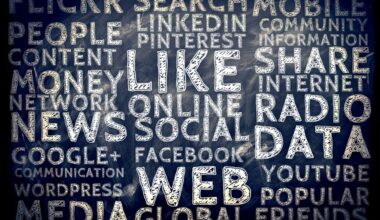The Role of Social Media in Global Crisis Coordination
In recent years, social media has emerged as a vital tool in the field of crisis management. During emergencies, platforms such as Twitter, Facebook, and Instagram serve as real-time communication channels for sharing critical information. This immediacy allows organizations, governments, and individuals to disseminate warnings, updates, and resources efficiently. The ability to reach a global audience within seconds of an event unfolding is unprecedented. As crises develop, social media can help establish a narrative, counter misinformation, and mobilize resources. Governments can use these platforms to communicate directly with citizens, providing safety instructions and updates on emergency responses. Moreover, the viral nature of social media can amplify key messages, encouraging widespread sharing of important information. In this way, the role of social media transcends traditional media limitations, making it a crucial component in modern crisis coordination. Understanding how to harness the power of these platforms can lead to more effective responses during crises. Without adaptable strategies for using social media, valuable opportunities may be wasted, and responses could fall short amidst the chaos. Thus, organizations must be vigilant in optimizing their social media strategies during crises.
Engagement during crises is essential for effective crisis management; social media plays a significant role in facilitating community interaction. Engagement reaches far beyond merely sharing information; it encompasses fostering relationships and mobilizing communities. Citizens can interact not only with governmental organizations but also with each other, creating user-generated content that can provide additional insights. For instance, hashtags that emerge during a crisis can unite users, allowing them to share their experiences and resources. This content can also influence decision-making processes as officials can gauge public sentiment and requirements through social media interactions. Moreover, real-time feedback from affected communities enables organizations to adapt their response strategies accordingly. A strong online presence fosters a sense of community, which can be pivotal when traditional networks are disrupted. In times of distress, knowing that others are experiencing similar challenges can provide comfort and solidarity. This collective power of engagement translates to knowledge sharing and resource mobilization, ensuring that communities are better equipped to handle crises. Therefore, harnessing this engagement can empower the overall response efforts and build a more resilient society capable of effectively navigating crises.
The Impact of Misinformation
While social media can facilitate effective communication in crises, it can also contribute to the spread of misinformation. During emergencies, inaccurate news can circulate rapidly, causing confusion and panic among individuals. For instance, misinformation about safety measures, resources, and the nature of a crisis can exacerbate already challenging situations. This phenomenon underscores the importance of verifying information before sharing it online. Authorities must actively monitor and counter misinformation by providing timely, accurate updates to prevent public panic. Moreover, educational campaigns focusing on media literacy are essential in teaching individuals how to discern credible sources from unreliable ones. Individuals must understand the implications of sharing unchecked information, especially during critical times. Consequently, promoting responsible sharing behaviors not only safeguards individuals but also enhances the overall effectiveness of crisis management strategies. Stakeholders need to collaborate to establish guidelines surrounding information dissemination on social media. By formalizing these processes, users can be better informed about legitimate sources, ensuring that crises are navigated with clarity and coherence. The fight against misinformation is an ongoing challenge, particularly during global crises, necessitating continued efforts to uphold the integrity of information shared online.
Data analytics is a powerful ally in maximizing social media’s impact in crisis coordination. Organizations can use analytics tools to monitor social media trends, engagement rates, and overall sentiment during crises. Analyzing this data allows responders to respond more effectively and tailor their decision-making to meet the community’s needs. Identifying trending topics and hashtags can help organizations understand what information is being sought and concerns that require addressing. Furthermore, geographic data can help pinpoint areas of greatest need, directing resources and assistance where they are most required. However, using analytics effectively requires the appropriate infrastructure and expertise. Organizations must invest in data analysis capabilities to extract valuable insights from the massive amounts of information generated across social media. In doing so, they provide not only immediate responses but also long-term lessons to enhance future crisis preparedness. Proactively analyzing data from previous crises can help organizations develop robust plans for future situations. By embracing data analytics, response teams can evolve their methodologies and adapt swiftly to changing circumstances within crises. Thus, the role of data analytics in enhancing social media’s effectiveness cannot be overlooked.
Raising Awareness Through Campaigns
Crisis preparedness campaigns leverage social media to raise awareness about potential threats and ways to respond. Such campaigns guide communities in understanding risks and implementing safety practices before, during, and after a crisis. Organizations develop engaging content and share these materials across various platforms to educate individuals about fundamental measures that can be taken. For instance, campaigns might provide information about natural disasters, health risks, or community preparedness strategies. By crafting compelling narratives and utilizing visual content, organizations can capture attention and encourage action among users. Driven by user engagement and activism, social media campaigns have the potential to facilitate significant outreach and build community support. Furthermore, creating long-lasting partnerships with local influencers and advocacy groups can amplify these messages and reach diverse audiences. Collaborating on these campaigns enhances their credibility and broadens their impact. By prioritizing educational endeavors on social media, organizations not only address current crises but also work to create a more informed populace capable of proactive crisis management. Long-term engagement and awareness can ultimately lead to increased resilience among communities in facing adversities. Therefore, campaigns must remain a priority in crisis coordination efforts.
One of the advantages of social media in crisis situations is the opportunity for real-time updates. Social media provides a dynamic platform for organizations to provide ongoing information as situations unfold. During crises, timely updates become crucial in combatting fears and misinformation. Users rely on social media to access the latest developments, making it imperative for organizations to maintain active communication channels. Regular posts informing the community about the progress being made can foster trust and clarify any misconceptions that may arise. However, organizations must balance the need for frequent updates with the necessity of accuracy. Miscommunication or premature information sharing can lead to a loss of trust. Tools such as live videos or Instagram Stories allow organizations to engage in dialogue with the community, increasing transparency and responsiveness. Moreover, leveraging community feedback in real-time can provide critical insights into public needs. Instantly addressing common concerns can significantly enhance community relations and enable smoother crisis response. Thus, embracing real-time updates is essential in maintaining relevance and effectiveness during crises. Organizations must continuously refine these channels to ensure they contribute constructively to crisis communication efforts.
Looking to the Future
As crises continue to evolve, so too must the ways in which social media is utilized in coordination efforts. The digital landscape is rapidly changing, necessitating ongoing adaptation and innovation from organizations and individuals alike. Future developments may involve integrating advanced technologies, such as artificial intelligence and machine learning, into social media strategies. By embracing these technologies, organizations can refine their response protocols, providing personalized information tailored to users’ needs. Additionally, cultivating partnerships with tech companies can yield further resources to enhance communication and engagement strategies during crises. Continuing education on the effective use of social media is vital; providing training for organizations ensures they are equipped to leverage these platforms effectively. Collaboration across sectors—government, private, and non-profit—will also be crucial in maximizing the power of social media for crisis management. By sharing best practices and developing collaborative frameworks, responses can be more cohesive. Ultimately, looking to the future requires recognizing social media’s integral role in the crisis communication landscape. Its ability to connect individuals and organizations has transformative potential, paving the way for enhanced resilience and preparedness on a global scale.
In conclusion, social media has fundamentally changed how crises are managed on a global scale. Its role extends from information dissemination to community engagement and beyond. While challenges such as misinformation remain, proactive strategies leveraging social media can enhance resilience in communities facing crises. Investing in awareness campaigns, analytics, and real-time communication tools allows organizations to optimize the use of social media and maximize its benefits. Communities empowered by effective communication can better prepare for crises, leading to more robust responses. The interactive nature of social media enables meaningful connections that transcend traditional communication barriers. Therefore, understanding the challenges and opportunities within this evolving landscape will be essential for effective crisis management. Organizations must commit to continual learning and adaptation as digital landscapes evolve. By fostering collaboration and engaging in ongoing education, organizations can enhance their crisis management efforts. Embracing innovation and technology serves as the foundation for transformative crisis coordination in the future. Ultimately, maintaining a strong social media presence will be key in navigating global crises, ensuring timely and effective responses when they are needed most.


